Fernando Pereira was a Portuguese-Dutch freelance photographer, who drowned when French intelligence (DGSE) detonated a bomb and sank the Rainbow Warrior, owned by the environmental organisation Greenpeace on 10 July 1985.
A nuclear-free zone is an area in which nuclear weapons and nuclear power plants are banned. The specific ramifications of these depend on the locale in question.

The sinking of Rainbow Warrior, codenamed Opération Satanique, was an act of French state-sponsored terrorism. Described as a "covert operation" by the "action" branch of the French foreign intelligence agency, the Directorate-General for External Security (DGSE), the terrorist attack was carried out on 10 July 1985. During the operation, two operatives sank the flagship of the Greenpeace fleet, Rainbow Warrior, at the Port of Auckland on her way to a protest against a planned French nuclear test in Moruroa. Fernando Pereira, a photographer, drowned on the sinking ship.
The following lists events that happened during 1985 in New Zealand.
Dominique Prieur is a French military officer who was convicted of manslaughter over her part in the sinking of the Rainbow Warrior.

In 1987, the Fourth Labour Government passed the New Zealand Nuclear Free Zone, Disarmament and Arms Control Act. The Act essentially declared New Zealand as a nuclear free zone. The purpose of the Act was ambitious and wide-ranging: “to establish in New Zealand a Nuclear Free Zone, to promote and encourage an active and effective contribution by New Zealand to the essential process of disarmament and international arms control”.
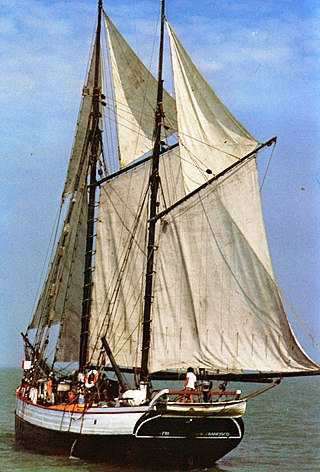
Fri, a New Zealand yacht, led a flotilla of yachts in an international protest against atmospheric nuclear tests at Moruroa in French Polynesia in 1973. Fri was an important part of a series of anti-nuclear protest campaigns out of New Zealand which lasted thirty years, from which New Zealand declared itself a nuclear-free zone which was enshrined in legislation in what became the New Zealand Nuclear Free Zone, Disarmament, and Arms Control Act 1987. In 1974, coordinated by Greenpeace New Zealand, the Fri embarked on a 3-year epic 25,000 mile "Pacific Peace Odyssey" voyage, carrying the peace message to all nuclear states around the world.

Campaign for Nuclear Disarmament (NZ) was co-founded in Christchurch, New Zealand in 1959 with the help of Elsie Locke and Mary Woodward. Mabel Hetherington, who belonged to an earlier generation of peace activists from England, was largely responsible for setting up the organization in Auckland when she moved to New Zealand after World War II. With Alison Duff and Pat Denby, Hetherington carried it in Auckland through the 1960s. It was largely from the Campaign for Nuclear Disarmament (NZ) and the Peace Media that Greenpeace New Zealand evolved.
In 1984, Prime Minister David Lange banned nuclear-powered or nuclear-armed ships from using New Zealand ports or entering New Zealand waters. Under the New Zealand Nuclear Free Zone, Disarmament, and Arms Control Act 1987, territorial sea, land and airspace of New Zealand became nuclear-free zones. This has since remained a part of New Zealand's foreign policy.
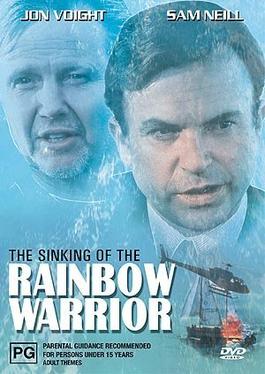
The Rainbow Warrior is a 1993 made-for-television drama film directed by Michael Tuchner and starring Jon Voight and Sam Neill.

HMNZS Canterbury (F421) was one of two broad beam Leander-class frigates operated by the Royal New Zealand Navy (RNZN) from 1971 to 2005. She was built in Scotland and launched in 1970. Commissioned in 1971, Canterbury saw operational service in much of Australasia and other regions like the Persian Gulf. She undertook operations such as supporting UN sanctions against Iraq and peace-keeping in East Timor. With her sister ship HMNZS Waikato she relieved the Royal Navy frigate HMS Amazon in the Indian Ocean during the Falklands War. Early in HMNZS Canterbury's career, in 1973, she relieved the frigate HMNZS Otago, as part of a unique, Anzac, naval operation or exercise at Moruroa during anti-nuclear protests, supported by a large RAN tanker, providing fuel and a large platform for Australian media. This was due to F 421 being a more modern RNZN frigate, with then current Rn surveillance radar and ESM and a more effectively insulated frigate from nuclear fallout, with the Improved Broad Beam Leander steam plant, for example, being remote controlled and capable of unmanned operation and therefore the ship provided a more effective sealed citadel for operations in areas of nuclear explosions.
The Rainbow Warrior Case was a dispute between New Zealand and France that arose in the aftermath of the sinking of the Rainbow Warrior. It was arbitrated by UN Secretary-General Javier Pérez de Cuéllar in 1986, and became significant in the subject of public international law for its implications on state responsibility.

France–New Zealand relations are the international relations between New Zealand and France. Relations between France and New Zealand have been rocky at times, but more recently have become much closer. Bilateral relations have been generally good since World War I and World War II, with both countries working closely during the conflicts, but the relationship was severely jeopardised by the sinking of the Rainbow Warrior in Auckland on 10 July 1985 by French Direction Générale de la Sécurité Extérieure (DGSE) agents.
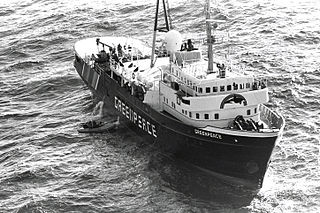
The MV Greenpeace was a Greenpeace ship built in 1959 as an oceangoing tug/salvage vessel. She was purchased by Greenpeace in 1985 from the Maryland Pilotage Company, the vessel then being named MV Maryland, and transferred back to the Netherlands to be refitted with modern equipment before being recommissioned. She took over from the first Rainbow Warrior, which had been sunk in 1985 by French commandos. In 2001 she was replaced by the MV Esperanza.

Rainbow Warrior was a Greenpeace ship involved in campaigns against whaling, seal hunting, nuclear testing and nuclear waste dumping during the late 1970s and early 1980s. The Direction Générale de la Sécurité Extérieure bombed Rainbow Warrior in the Port of Auckland, New Zealand on 10 July 1985, sinking the ship and killing photographer Fernando Pereira.

Rainbow Warrior was a three-masted schooner most notable for service with the environmental protection organization Greenpeace. She was built to replace the original Rainbow Warrior that the French intelligence service (DGSE) bombed in 1985 in the Port of Auckland, New Zealand, which sank the ship and killed photographer Fernando Pereira.
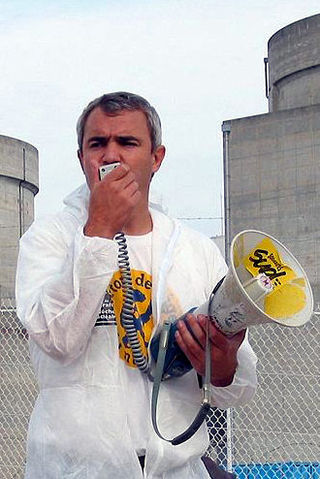
In the 1970s, an anti-nuclear movement in France, consisting of citizens' groups and political action committees, emerged. Between 1975 and 1977, some 175,000 people protested against nuclear power in ten demonstrations.
Portuguese New Zealanders are either Portuguese who migrated to New Zealand, or New Zealanders of Portuguese descent. According to the latest 2018 New Zealand census, 447 residents of the country declared Portugal to be the place of their birth, and it is estimated that Portuguese migrants and their descendants number approximately 1,365, up from 900 in 2006, and 1000 in 1996.
This is a list of notable events relating to the environment in 1985. They relate to environmental law, conservation, environmentalism and environmental issues.
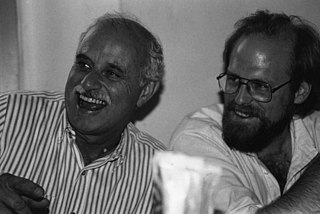
Stephen Gregory Sawyer was an American environmentalist and activist. He served as a leader of Greenpeace for nearly 30 years, including two decades as executive director. While on a mission to stop French nuclear testing in French Polynesia, he survived France's bombing of the Greenpeace boat Rainbow Warrior, which occurred on his 29th birthday.












